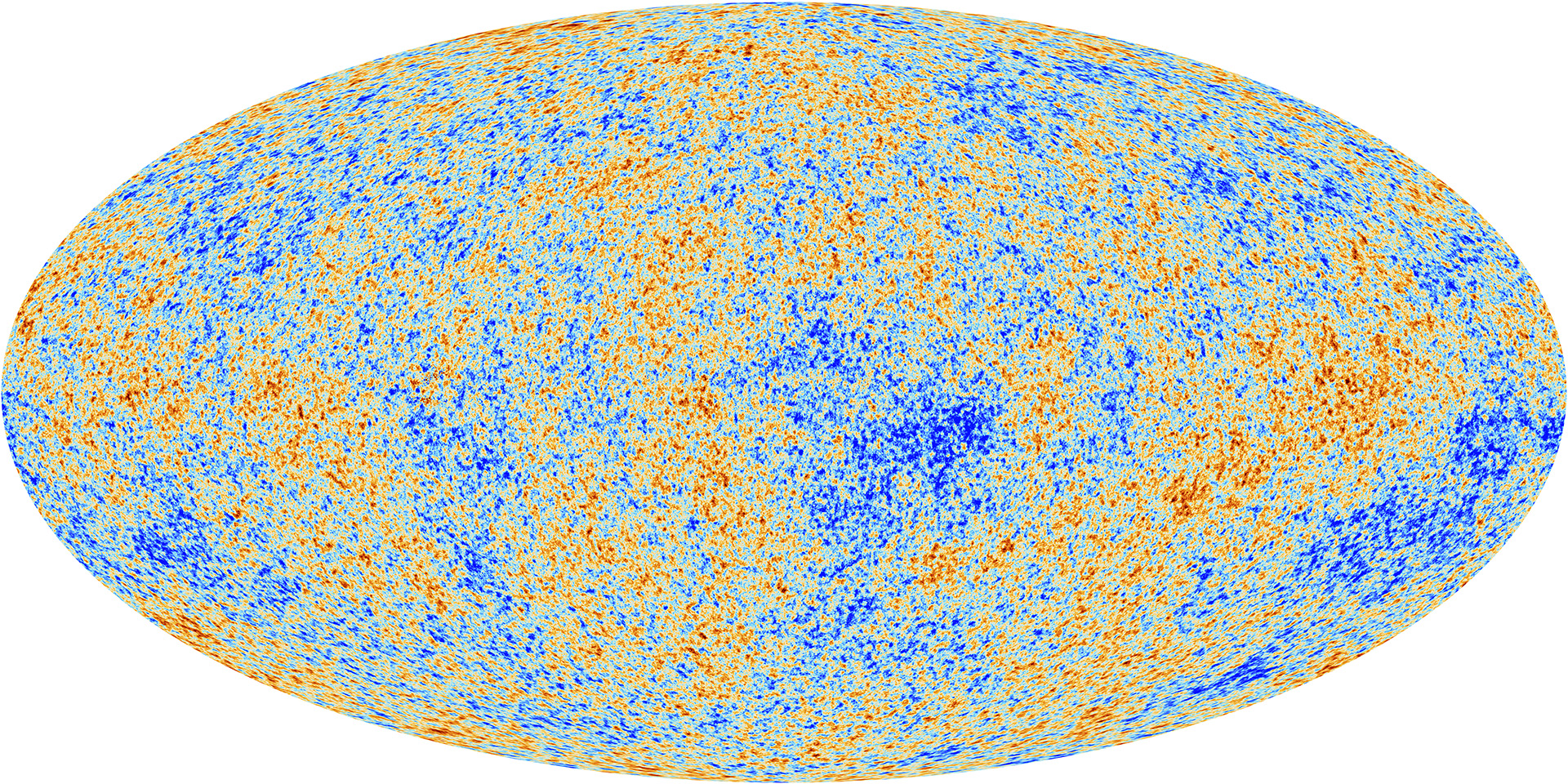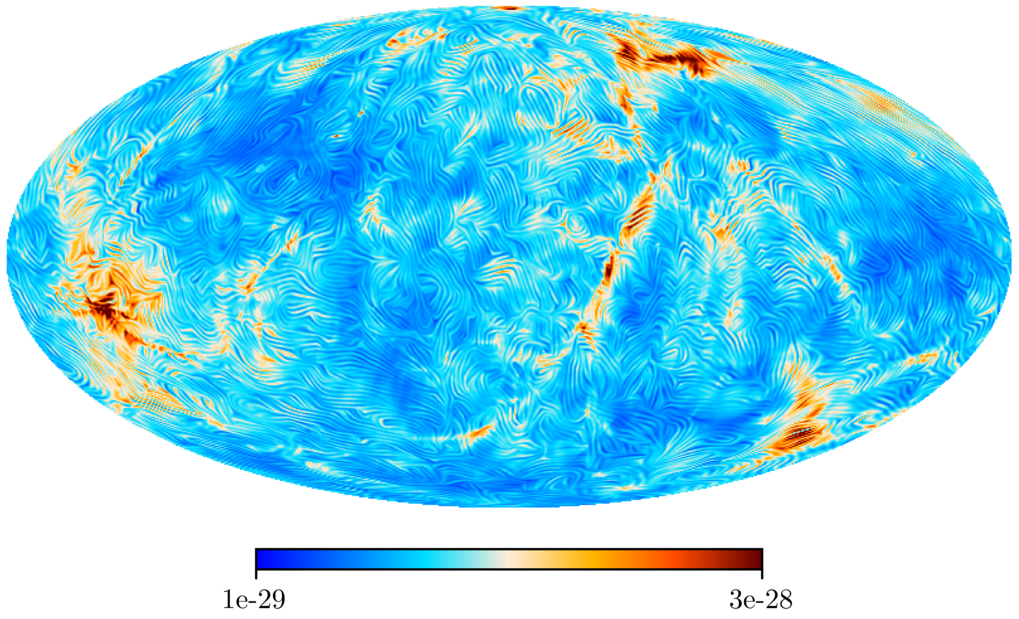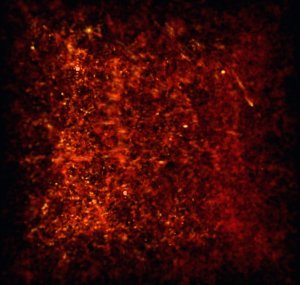
Cosmology
The temperature fluctuations in the cosmic microwave background (CMB) and the cosmic matter distribution in the large-scale structure (LSS) are both tracers of the primordial quantum fluctuations. Those are believed to have happened during the very first moments of the Universe in the inflationary epoch. CMB and LSS are therefore our primary information sources on cosmology. Their detailed studies provide us insight into the history, geometry and composition of the Univserse. Thereby the focus is on data analysis. (Planck publications, other Publications)
Highlights
Relics of the Big Bang

In the first fractions of a second after the birth of our universe, not only elementary particles and radiation, but also magnetic fields were generated. A team led by the Max Planck Institute for Astrophysics in Garching has now calculated what these magnetic fields should look like today in the universe – in great detail and in 3D.
Mapping of the Universe beyond the Known

A team of researchers at the Max Planck Institute for Astrophysics have not only produced the most accurate map of the observable Universe, but in fact made 40,000 different versions, each of them representing a possible Universe consistent with known galaxies. Hence, these 40,000 maps not only encode our present knowledge of the cosmic structure but their differences also show how unknown regions of the Universe might look.
Cosmography

The distribution of cosmic matter is only partially known since it mostly consists of mysterious dark matter, which we neither see nor know. The visible galaxies trace solely the rough outline of the highly complex network of matter concentrations and filaments, very like the lights of cities on a dark coast line permit us to imagine the countries beyond. At the Max-Planck-Institute for Astrophysics (MPA), a novel computer program for cosmic cartography was developed which permitted an international cosmography team to calculate a three-dimensional high-resolution map of our cosmic neighborhood, that shows the distribution of the invisible dark matter in great detail.